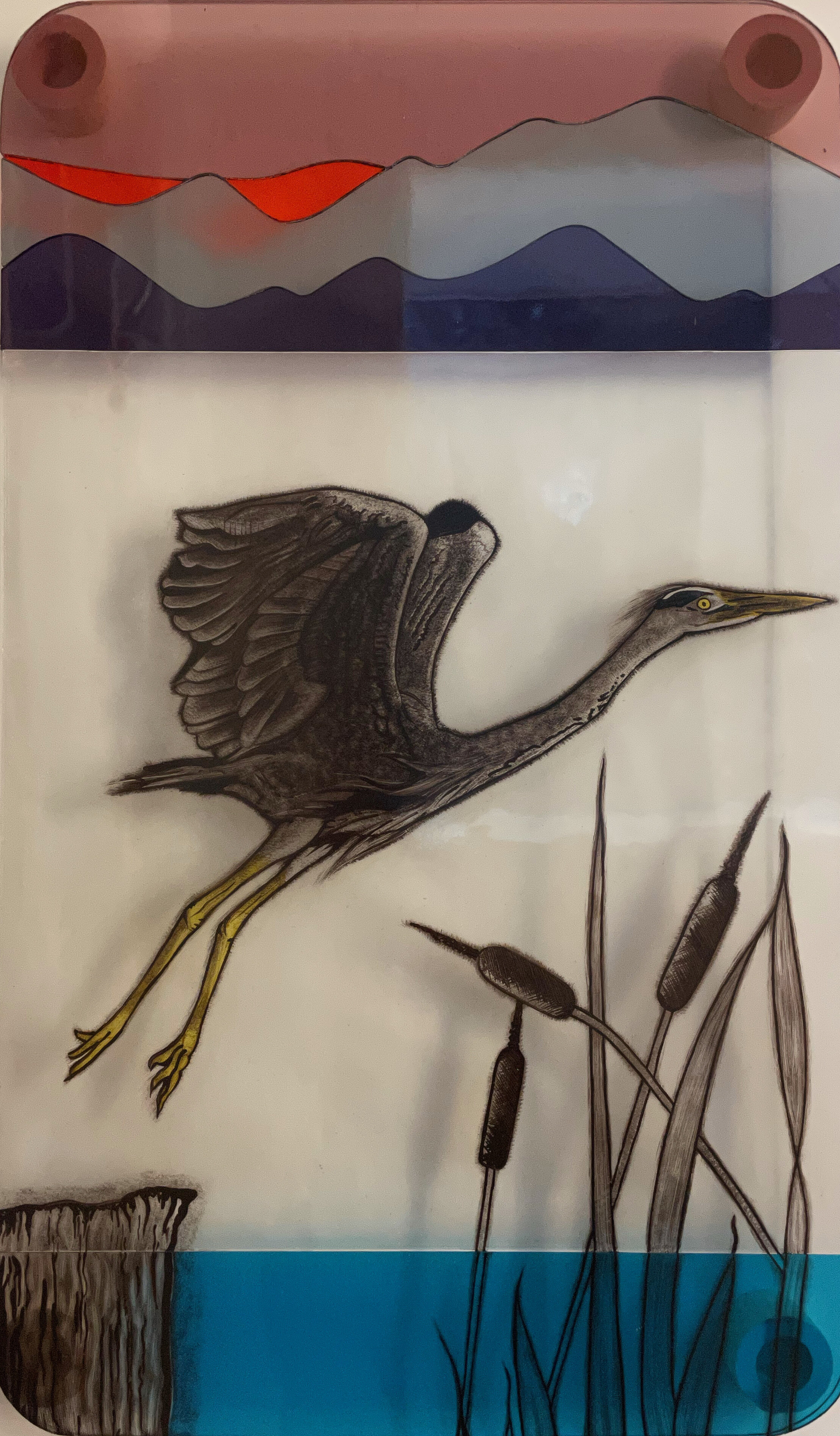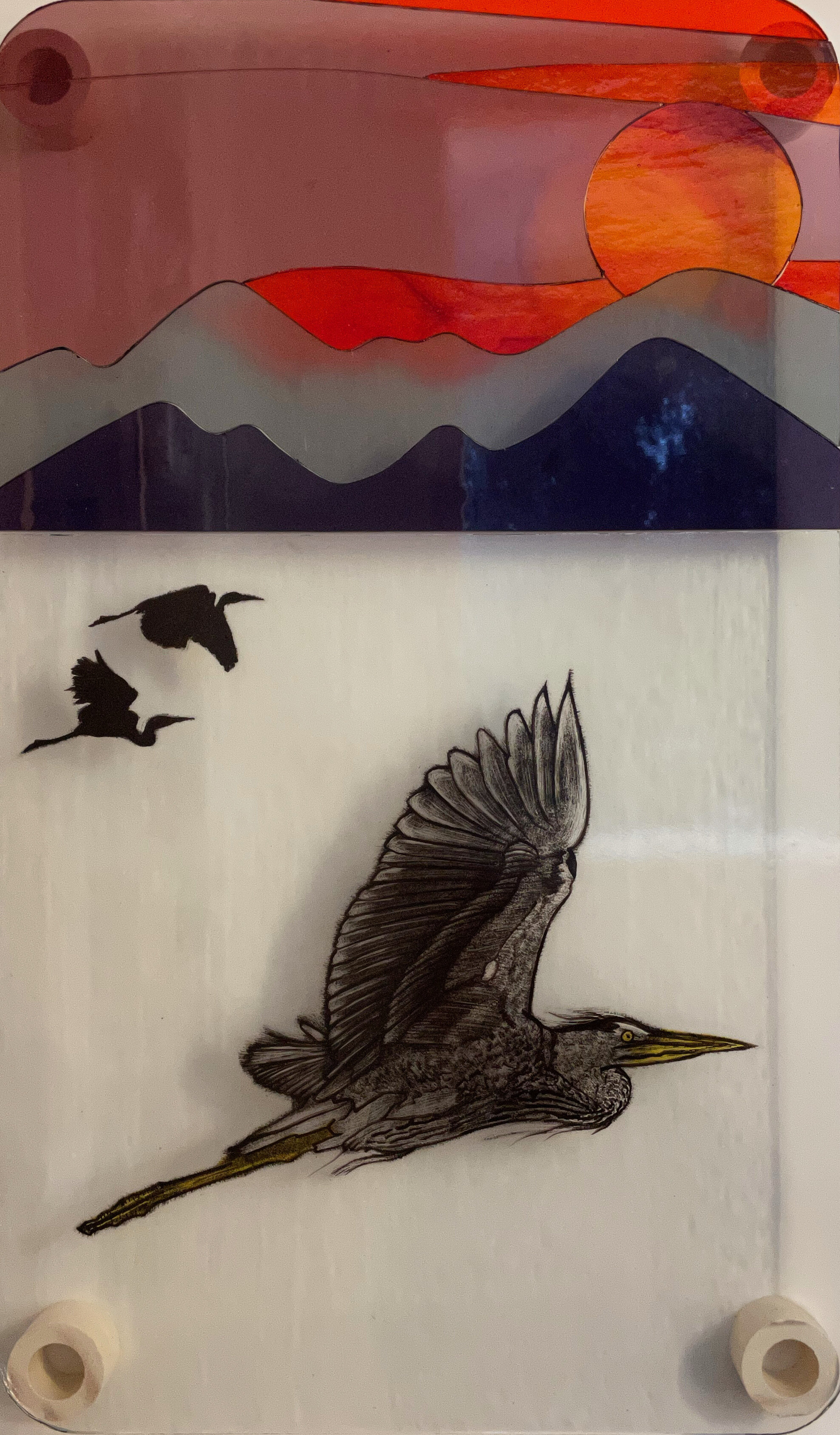My practice in ‘warm glass’
These bowls are made using techniques called 'fusing' and 'slumping' - often referred to as ‘warm glass’ work. Together, these processes offer a direct link between the imagination and reality - yet there is always that element of surprise. The transformative conditions in which they are made sometimes impose a 'mark' to define their uniqueness.
Inspired by glass as a child
I have been drawn to stained glass for many years. Firstly, as a child, looking up at the extraordinary northern rose window in Chartres Cathedral. From that time, the sapphire blue glass has been lodged as my favourite. Yet it was only as an adult that I was trained in the medieval tradition of stained glass. For this, I apprenticed myself to a Master Glass Artist, Rod Friend, who drew out in me a facility with glass. This led me to attend Swansea Metropolitan University, from which I emerged with wider artistic horizons and a Masters Degree in Architectural Glass.
Kiln work
Kiln-work came to me later. Wishing to get the most from my kiln, I began experimenting with fusing and slumping glass, and working with strong design to create pieces that captured and cast the best effects of coloured light. Sometimes geometric, sometimes fluid, the designs always included the brightest and best of the glass available. As time and experimentation progressed, I settled on the bowl as my primary vehicle for the medium of glass. It melds art and pragmatism and invites a continual adventure with design.
Inspiration
The design of each piece ‘arrives’ as I wake, along with a compulsion to get my hands on the glass and replicate what has been inspired. It is the most surprising process and one that, I feel, resonates with the alchemical nature of glass work. Opening the kiln is always unexpected. The pieces carry a ‘commentary’ of what took place in the private, hot, space; an unseen molten process, the variables of which are too numerous to control perfectly. So, each one emerges with its own ‘mark’; a unique offering to its final home.
My practice in ‘cold glass’
By comparison to ‘warm glass’, ‘cold glass’ work refers to the cutting and joining of stained glass with lead came. This was the first foray into stained glass for me and my primary passion. Each stage in the production of a window or decorative piece requires 100% attention and care as each stage builds upon the next. I now take commissions, sometimes combining the ‘warm’ and the ‘cold’ glass working techniques.
Both of these commissioned pieces are positioned above an internal door, capturing the light and creating a strong effect. I have used Lamberts glass (Waldsassen, Germany) in both of these pieces. Lamberts glass is very special, mouth-blown glass. Each piece is unique. (http://www.lamberts.de/en/)
This series of herons will be wall mounted with ‘stand off's’ so that the light can pass through them. They are an example of traditional painted stained glass (cold) and fused glass (warm). Each one measures 64cm x 38cm.
Roof-light for a flat extension and part of the MA final show. (Fitted size - 2m x 1.2m)
In situ and casting colour!







